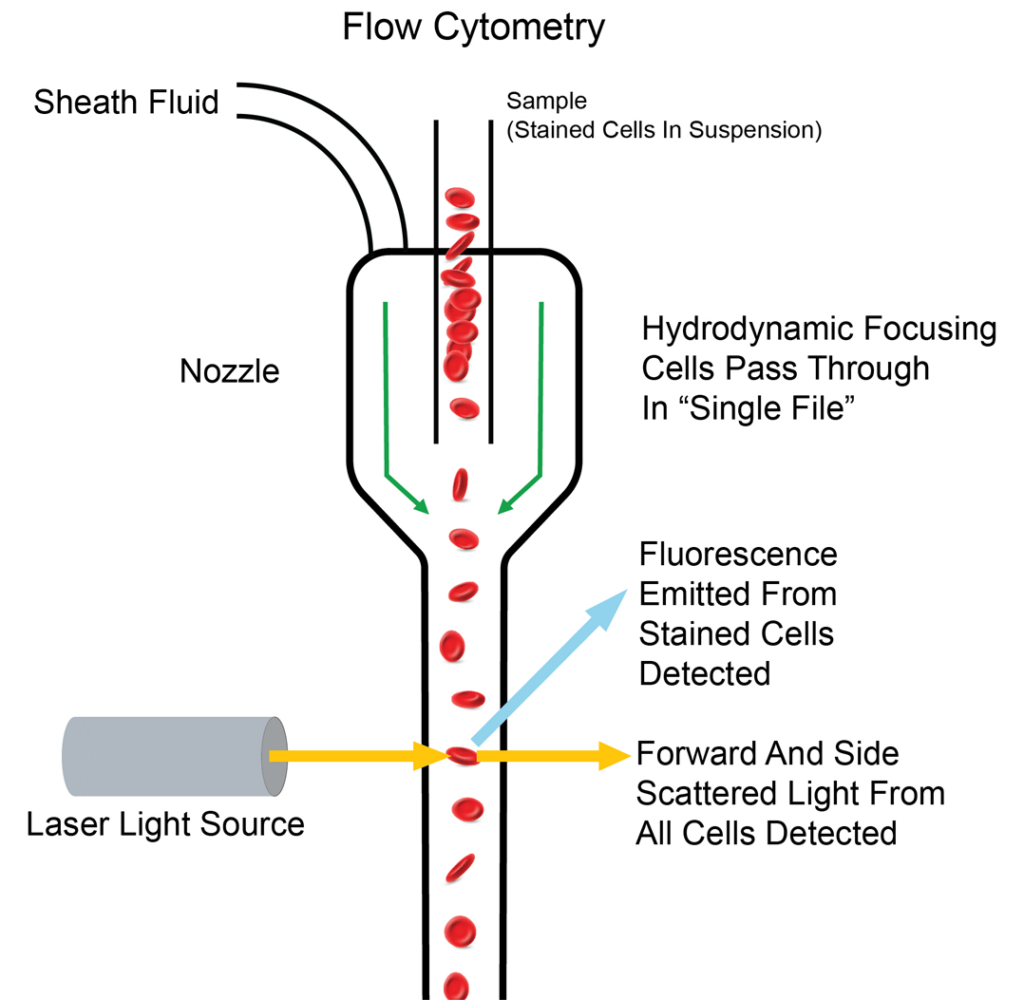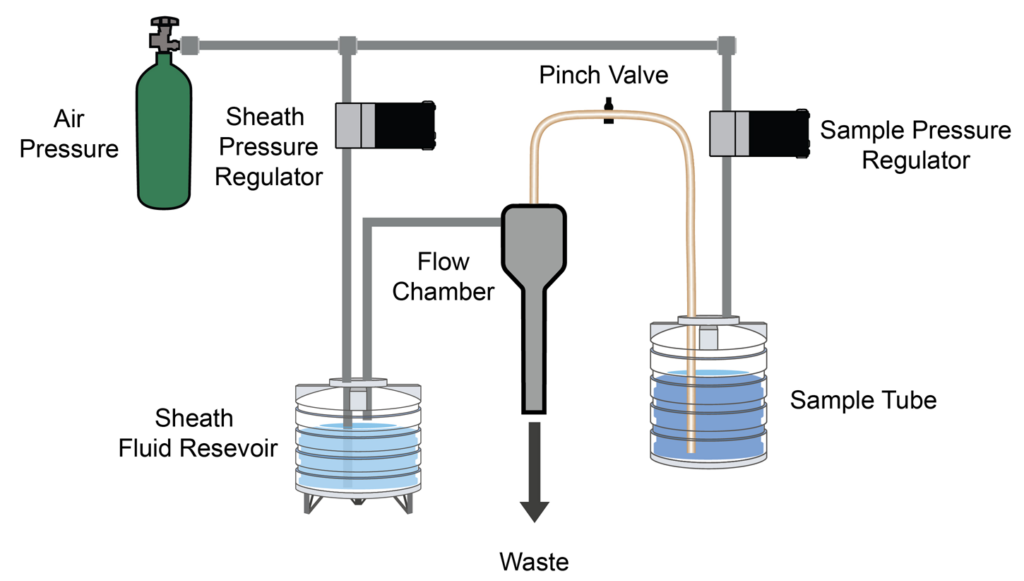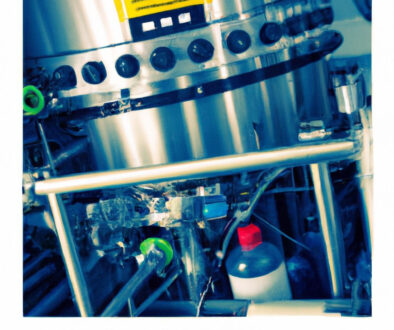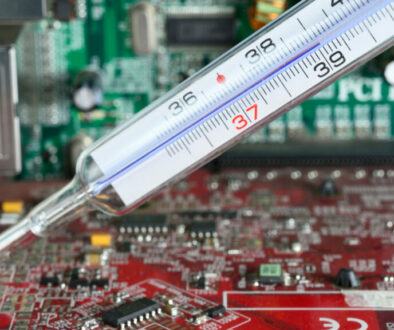How to Control Pressure in Flow Cytometry Applications
Flow cytometry is a technique used to analyze the physical and chemical properties of cells and particles in a fluid stream. In order to study the properties of individual cells, the cells are typically stained with fluorescent dyes that emit light when exposed to a specific wavelength of light. The cells are then passed through a flow chamber and subjected to a light source (see diagram below). The light source excites the fluorescent dyes, causing them to emit light at a different wavelength. This fluorescence is then detected by a detector, which sends signals to a computer for analysis.

The combination of the light source, flow chamber, and detector allows for the rapid and simultaneous analysis of thousands of cells per second. The fluorescence emitted from the stained cells provides valuable information about the physical and chemical properties of the cells, such as their size, shape, and internal structure. This information can then be used to study a wide range of biological processes, including cell proliferation, apoptosis, and protein expression. By using flow cytometry, researchers, clinicians, and industrial users can gain valuable insights into the biological processes of cells, helping to advance medical research, improve clinical diagnosis, and optimize industrial processes. This is where Kelly Pneumatics’ proportional valves and electronic pressure regulators come in.
Proportional Valves
Proportional Valves are essential components in flow cytometry systems. They control the flow rate and pressure of fluids passing through the instrument, ensuring that the cells and particles are evenly distributed for accurate analysis. Kelly Pneumatics’ proportional valves are designed with high precision and repeatability in mind, ensuring consistent and reliable performance in even the most demanding applications.
Electronic Pressure Regulators
In addition to proportional valves, electronic pressure regulators are also critical components in flow cytometry systems. They regulate the pressure of the fluid, ensuring that the cells and particles are exposed to a consistent and controlled environment. Kelly Pneumatics’ Electronic Pressure Regulators are equipped with internal pressure sensors and PID control circuits, which accurately monitor and adjust the pressure in real time, providing optimal conditions for analysis.

The diagram above illustrates how the Kelly Pneumatics Electronic Pressure Regulator is used to control the pilot pressure in a flow cytometry system. A pressure regulator is connected to two key components in the system: the Sheath Fluid Reservoir and the Sample Tube. Each regulator is used to control the pilot pressure inside the Sheath Fluid Reservoir and the pilot pressure on the Sample Tube, ensuring that the mixing of the Sheath Fluid and Sample Fluid inside the Flow Chamber is precise and accurate.
The regulator’s ability to control the pilot pressure in the Sheath Fluid Reservoir and Sample Tube is critical to the success of the flow cytometry analysis. If the pressure is not accurately controlled, the Sheath Fluid and Sample Fluid may not mix properly, leading to inaccurate results. However, by using the Kelly Pneumatics Electronic Pressure Regulator, the flow cytometry system can maintain a consistent and accurate pilot pressure, ensuring that the mixing of the fluids is optimal. This results in more accurate and reliable results, making the Kelly Pneumatics Electronic Pressure Regulator an essential component of any flow cytometry setup.
In addition to its precision control capabilities, the Kelly Pneumatics Electronic Pressure Regulator is also designed to be highly flexible and customizable. It can be controlled via a Programmable Logic Controller (PLC) or Data Acquisition (DAQ) system, allowing for real-time monitoring and adjustment of the pilot pressure. The regulator can immediately read back the current output pressures, providing valuable information to the flow cytometry system. It can also be commanded to new set points for dynamic pressure adjustment, making it ideal for demanding applications where quick response times are required. The regulator is equipped with analog voltage inputs, allowing for easy integration into a variety of control systems. This level of control and flexibility makes the Kelly Pneumatics Electronic Pressure Regulator the perfect solution for flow cytometry applications that require precise and dynamic pressure control.
Kelly Pneumatics’ Proportional Valves and Electronic Pressure Regulators can be essential components in flow cytometry systems. They provide precise control over fluid flow and pressure, leading to more accurate and reliable results. Whether you’re a researcher, clinician, or industrial user, Kelly Pneumatics’ products are the perfect solution for your flow cytometry needs.



